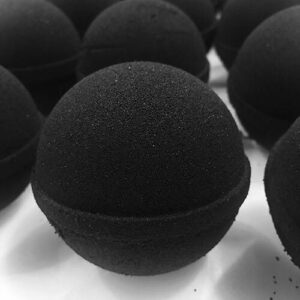How to Properly Care for and Maintain Marble Stone Flooring?
Marble flooring has long been admired for its beauty and elegance. Whether you have it in your living room, bathroom, or office, marble brings a touch of luxury to any space. However, to keep your marble stone flooring looking its best for years to come, proper care and maintenance are essential. While marble is a durable material, it is still susceptible to scratches, stains, and dullness if not cared for correctly. In this blog, we’ll walk you through easy-to-follow tips and best practices for maintaining your marble floors.
Understanding Marble Flooring
What is Marble?
Marble is a natural stone that forms from limestone under extreme heat and pressure. It is known for its distinctive veining, unique patterns, and luxurious appearance. Because it is a natural material, each marble tile or slab is unique, making it a popular choice for homeowners and designers alike.
Why Does Marble Need Special Care?
While marble is a strong stone, it is porous and can easily absorb liquids, making it prone to staining. It is also softer than materials like granite, which means it can scratch more easily. Marble can lose its shine over time if not maintained properly, so taking care of it ensures it remains beautiful and durable for years.
Daily Care for Marble Flooring
1. Regular Cleaning
Sweep and Dust Daily
The best way to keep your marble floors looking great is to sweep or dust them daily. Dirt, dust, and grit can act like sandpaper, scratching the surface of the marble as you walk over it. Using a soft broom or a microfiber dust mop will help you remove particles without causing scratches.
Mop with a Gentle Cleaner
Mopping your marble floors regularly helps keep them clean and shiny. However, you should avoid using harsh chemicals or acidic cleaners like vinegar, which can damage the surface. Instead, use a pH-neutral cleaner that is designed for natural stone. You can also mix mild dish soap with warm water for an effective and gentle cleaner.
When mopping, use a damp mop rather than a soaking wet one. Too much water can penetrate the porous surface of the marble and cause damage over time. Be sure to dry the floor afterward with a soft cloth or towel to prevent water spots or stains.
2. Addressing Spills Quickly
Blot, Don’t Wipe
Marble is highly porous, which means it can stain easily when exposed to liquids like wine, coffee, or juice. If a spill occurs, blot it up immediately using a soft cloth or paper towel. Don’t wipe or rub the spill, as this can spread the liquid and push it further into the marble.
Use a Gentle Cleaner for Stains
If a stain forms, you can use a gentle marble cleaner or a homemade paste made from baking soda and water. Apply the paste to the stain, cover it with plastic wrap, and let it sit for 24 hours before wiping it clean. This method can help lift minor stains without damaging the surface.
Preventative Measures to Protect Marble Floors
1. Use Rugs and Mats
Place Rugs in High-Traffic Areas
One of the easiest ways to protect your marble floors from scratches and wear is to place rugs or mats in high-traffic areas, such as hallways, entryways, and kitchens. Rugs help catch dirt and debris before they can scratch the surface of the marble.
Use Soft Pads Under Furniture
Furniture legs can scratch or damage marble floors over time. To prevent this, place felt pads or soft furniture pads under the legs of chairs, tables, and other heavy items. This will also make it easier to move furniture without dragging it across the floor and causing scratches.
2. Avoid Sharp or Abrasive Items
Be Mindful of Footwear
Shoes with hard soles or high heels can scratch marble floors, especially if they have small stones or dirt stuck in the treads. Avoid wearing shoes that can damage the floor, or place a mat at the door to encourage guests to wipe their shoes before walking on the marble.
Keep Pet Nails Trimmed
Pets can also be a source of scratches on marble floors. Keep your pet’s nails trimmed to avoid any accidental damage caused by their movement across the floor.
Long-Term Maintenance for Marble Floors
1. Sealing the Marble
Why Seal Marble?
Marble is porous, meaning liquids can seep into the stone and cause staining. Sealing your marble floors helps to create a protective barrier that repels moisture and prevents stains from setting in. While sealing does not make marble completely stain-proof, it significantly reduces the risk of damage.
How Often Should You Seal?
How often you seal your marble floors depends on how heavily they are used. For high-traffic areas like kitchens and hallways, you should reseal the marble every 6 to 12 months. For low-traffic areas, you can reseal less frequently, about once every two years.
How to Seal Marble Floors
You can seal marble yourself or hire a professional. If you choose to do it yourself, be sure to use a sealer specifically made for marble. Follow the instructions on the product carefully, applying the sealer evenly and wiping away any excess. Allow the sealer to dry completely before using the floor.
2. Polishing Marble for Extra Shine
Restore the Shine with Polishing
Over time, marble can lose its shine due to foot traffic and general wear. Polishing the marble can help restore its glossy appearance and enhance its natural beauty. You can use a marble polish that is designed to be used at home, or hire a professional for a more intensive polishing treatment.
How Often to Polish
Polishing does not need to be done as frequently as cleaning or sealing. Depending on the traffic in your home, you may only need to polish marble floors once a year or every few years to maintain their shine.
3. Professional Cleaning and Restoration
When to Call a Professional
While regular maintenance can keep your marble floors in good shape, over time, they may develop more serious issues like deep scratches, etching, or heavy staining. When this happens, it’s best to call a professional stone restoration service. Professionals have the tools and expertise to grind away surface imperfections and restore the marble’s original luster.

Deep Cleaning for Tough Stains
For tough stains that don’t respond to household cleaners, professionals can use special cleaning solutions and equipment to deep clean the marble and remove embedded dirt or stains without damaging the stone.
Common Mistakes to Avoid
1. Using Harsh Chemicals
Avoid using cleaners that contain vinegar, lemon juice, or any other acidic ingredients, as they can etch and dull the surface of the marble. Stick to pH-neutral cleaners that are safe for natural stone.
2. Over-Wetting the Floor
When cleaning, it’s important not to use too much water, as marble is porous and can absorb excess moisture. Always use a damp mop rather than a soaking wet one, and dry the floor immediately after cleaning.
3. Ignoring Spills
Allowing spills to sit on marble floors can lead to permanent stains. Always clean up spills as soon as possible to prevent them from penetrating the stone.
Conclusion: Keeping Your Marble Floors Beautiful
Caring for and maintaining marble stone flooring doesn’t have to be difficult, but it does require consistency. Regular cleaning, prompt attention to spills, and preventative measures like using rugs and pads will go a long way in preserving the beauty of your marble floors. By sealing the marble and polishing it as needed, you can ensure that it stays looking luxurious and elegant for many years. With proper care, your marble floors will continue to shine and enhance the look of your home or office.
Note:- For read more articles visit on freshvoicehub.














Post Comment